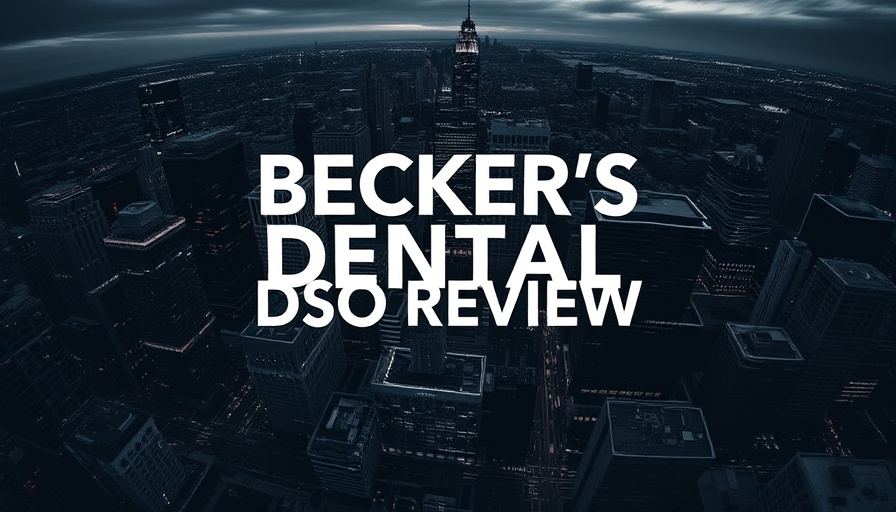
Revolutionizing Digital Dentistry: The iTero Design Suite
In an era defined by rapid technological advancements, the dental industry is undergoing a significant transformation, especially with the introduction of the iTero Design Suite by Align Technology. Positioned as a groundbreaking move into fully cloud-based CAD solutions, this suite not only enhances the scanning capabilities of the iTero Lumina scanner but also redefines the workflows in digital dentistry. Following months of rigorous testing at the Institute of Digital Dentistry, we share our insights into how this innovation could reshape clinical practices.
The Evolution of iTero: A Historical Context
Since its inception in 2007, iTero has been a staple in digital dentistry, primarily popularized through its integration with Invisalign. This historical association allowed iTero to thrive amidst growing competition, particularly against peers that offer more open systems and robust AI functionalities. From the launch of its first scanner -- which required powder -- to the recent iTero Lumina featuring Multi-Direct Capture Technology, the company has continually evolved, addressing the dynamic needs of dental professionals. The introduction of cloud technology stands as a remarkable pinnacle in iTero’s journey.
Understanding the Cloud-Based CAD Solution
The iTero Design Suite operates as a fully cloud-based CAD software, enabling seamless data access and processing regardless of physical locations. This significant shift brings forth a myriad of operational benefits, particularly for practitioners managing multiple locations. Unlike its contemporaries, such as 3Shape’s Automate, which offers limited cloud features, or Dentsply Sirona's DS Core still in development, iTero's initiative sets a new industry standard for comprehensive digital workflows.
Benefits of Cloud Integration in Clinical Practices
The transition to a cloud platform presents unique advantages for dental practices. Firstly, it enables real-time collaboration; multiple practitioners can access and contribute to a patient’s case simultaneously, enhancing teamwork and efficiency. Secondly, data security and backup management become more robust, as cloud solutions often incorporate advanced encryption and redundancy measures, safeguarding sensitive patient information.
Inspirational Case Studies: iTero in Action
Several dental practices have already begun integrating the iTero Design Suite into their workflows. For instance, a solo dental practitioner in suburban Pennsylvania noted a significant reduction in turnaround time for prosthetic fabrications, which subsequently increased patient satisfaction. This demonstrates how adopting modern technology can enhance practice efficiency and foster trust with patients who expect high-quality care.
Future Predictions: Where is Digital Dentistry Headed?
Looking forward, the advancements introduced by the iTero Design Suite could catalyze broader trends in digital dentistry. With the push towards artificial intelligence and machine learning, we may witness further integrations capable of offering predictive analytics, enhancing diagnostics, and optimizing treatment plans. The anticipated convergence of cloud capabilities with AI will likely pave the way for personalized patient care, tailoring dental protocols to individual needs.
Counterarguments: Challenges Ahead for Dental Practices
While the benefits are clear, the transition to cloud-based systems is not without its challenges. For example, some dental professionals express concerns regarding their technical skills, fearing they may not effectively use these advanced tools. Moreover, the initial investment in new technology can present a significant barrier for smaller practices. It is crucial for vendors like Align Technology to provide comprehensive training and support to mitigate these fears and facilitate a smoother adoption process.
Final Thoughts: Transforming Your Practice
The iTero Design Suite is more than just a software package; it represents an innovative leap that can transform dental practices. By embracing cloud technology, practitioners can enhance operational efficiency and patient satisfaction. As dental professionals continue to navigate the evolving landscape of digital dentistry, integrating solutions like iTero will be essential to foster trust, accelerate growth, and ensure quality care.
As you consider implementing new technologies in your practice, it's vital to stay informed about the latest developments. Embracing innovation not only benefits your practice's efficiency but is also a step towards providing superior patient care.
 Add Row
Add Row  Add
Add 




Write A Comment